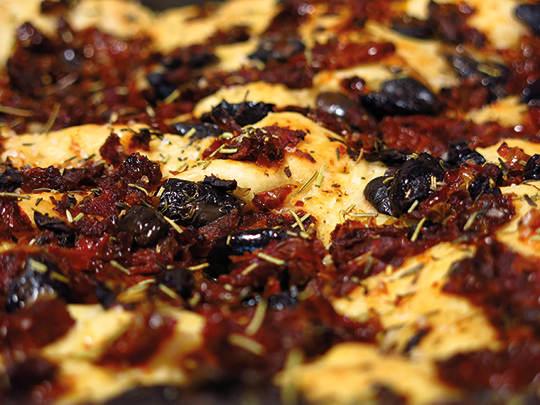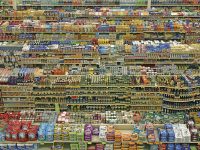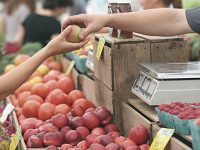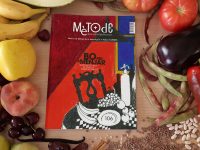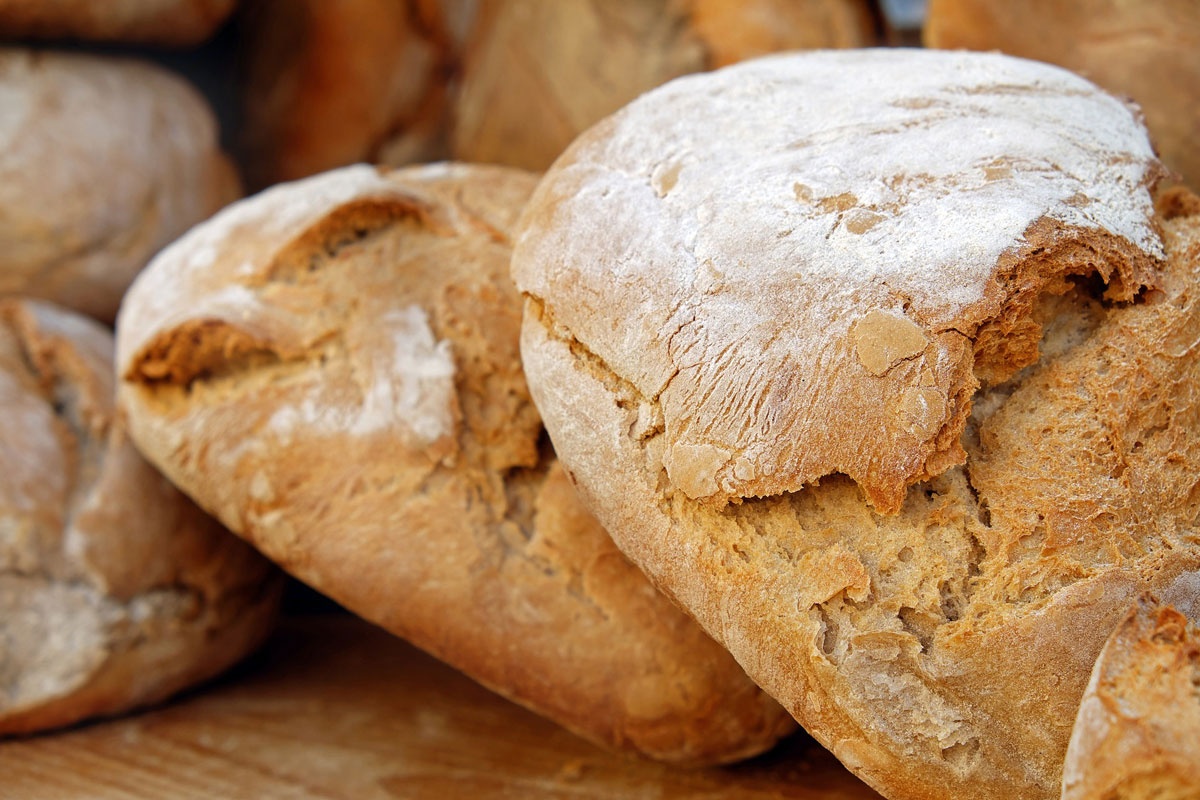
Vicent Andrés Estellés came from a long line of bakers, and he learned the trade with his father. It is not strange, therefore, that this food item is present in his poems, with direct references or with metaphors. Thus, in Horacianes we dip «a lot of bread, as the poor do, with oil, which has salt and has acquired a taste of the roasted pepper», while in M’aclame a tu he writes «you will be the yeast that makes the bread grow». If the family of bakers was very, very old, maybe there is a connection between our poet and the first Egyptians who learned to make bread with yeast. About 6,000 years ago, someone in the Nile Valley noticed that a paste made from flour and water, after a few days, started to bubble and grow. This individual, or another, found the way to use that product to add it to a mixture of flour and water, and knead and bake the resulting dough. Thus he obtained bread, a product with a very pleasant texture and scent, consisting of a hard and golden crust covering a sponge-like material. After cultivating the land and grazing the cattle, humans learned how to grow microorganisms.
The first step for making bread is mixing the dough. Flour, water and yeast are mixed, and a little salt is added. Flour is a complex substance, made up mainly of starch, with lesser amounts of proteins. In wheat flour we can find, among others, glutenin and gliadin proteins. When the mixture is kneaded to form the dough, these proteins interact with each other and form an elastic net with embedded granules of starch, yeast and air bubbles. The dough is then left resting, and it is then that the yeast acts.
Yeast is a living organism that transforms the sugars from the starch into carbon dioxide and ethanol. The carbon dioxide ends up either inside the bubbles or forming other bubbles. And, since gluten is elastic, the generated gas is trapped and the dough starts increasing its volume. On the other hand, part of the alcohol evaporates, filling the room with the sweet scent of fresh bread. Another aspect of the fermentation consists in the production of aromatic substances that give the crumb of the bread its characteristic scent.
«In addition to producing new flavours, scents and textures, fermentation allows to preserve large quantities of food surplus, since it creates an acidic or alcoholic medium that prevents the growth of microorganisms that spoil food»
When the dough has doubled its initial volume it is time to knead again, to give shape to the loaves, and to let the second fermentation take place. When the pieces have, again, doubled their volume, it is time to bake them. At the beginning, the yeast cells continue to produce carbon dioxide, which explains why the pieces increase their volume. As the temperature continues to increase, the yeast cells die. From this moment on, the increase in volume of the loaves is produced due to the thermal dilation and the incorporation of water vapour. The temperature continues to increase, so the starch grains absorb water and gelatinise (at about 60ºC) and the proteins coagulate (70ºC). At around 100ºC, vapour is generated and it goes to the bubbles. The process of increase in volume when the crust is formed: on the surface of the bread practically all water evaporates, and the surface turns dry and hard. Moreover, at this point there are reactions between sugars and amino acids which form different pleasantly-scented brown substances.
The process to get good bread is subjected to chance. If the fermentation process stops, the final product will not have flavour nor volume. But if the fermentation is too long, the bread will have an unpleasant taste. It is recommended, therefore, to use just enough yeast and to opt for a slow fermentation. If the temperature of the workroom is high, we waste less yeast and, if it is low, we need more. If the fermentation seems to be going too fast, the dough must be put in the fridge.
When it comes to making bread, two important aspects have to do with flour and yeast. There are different varieties of wheat that produce flours with different contents of proteins. Flours to make bread have between 11,5% and 13,5% proteins (strong flour). In addition, it is recommended to use fairly unprocessed flour, which still has carotene, which is a substrate on which the yeast works to generate aromatic substances in the fermentation. That is why in many recipes, they use a part of wholemeal flour. As for the yeast, the Saccharomyces cerevisiae, which is bought in supermarkets or bakeries, is frequently used. Another way to add yeast is through sourdough, a mixture of flour and water that starts fermenting naturally in a few days. What forms in this dough is a symbiotic culture of yeasts and bacteria who produce lactic acid and come from the wholemeal flour or the environment. Bread made with sourdough has a slightly acidic taste due to the presence of lactic acid.
Microorganisms, before they were used to make bread, were used to make alcoholic beverages. Wine was obtained in the Caucasus area 8,000 years ago, and there is even older evidence of other fermented beverages. In addition to producing new flavours, scents and textures, fermentation allows to preserve large quantities of food surplus, since it creates an acidic or alcoholic medium that prevents the growth of microorganisms that spoil food. Since then we have used yeast and bacteria to develop biotechnological processes and to produce not only bread and wine, but also beer, soy sauce, cheese, yogurt, kimchi, sauerkraut…
Olive, tomato and herbs pie
Mediterranean areas enjoy a long tradition of flat breads coated with oil, salt and other ingredients: herbs, sardines, anchovies, onions, tomatoes, peppers, olives, cheese… They are our savoury pies, the Italian focaccias and pizzas, the French fougasses. The difference with regards to conventional bread is the presence of fat in the dough, be it in the form of olive oil or butter. The main difference between pizzas and cakes is that pizza dough has little yeast, so it just barely increases its volume.
Ingredients
For the dough: 500 g of flour, 225 ml of lukewarm water, 50 ml of olive oil, 25 g of yeast, 1 teaspoon of salt. For the topping: 75 g of black boned olives, 150 g of dried tomatoes in oil, rosemary, thyme, salt and black pepper.
Preparation
Put the flour in a large bowl. In another bowl, mix the water with the olive oil, the well-crumbled yeast and the salt. Make a hole in the centre of the flour and gradually add the liquid as you add the other ingredients. Knead with your hands for 10 minutes. Coat a large bowl with flour and leave the dough resting until it doubles its size (from 30 to 60 minutes), covered with a damp cloth or transparent plastic. Preheat the oven at 200ºC. Oil and season with sea salt the bottom of the mould (about 28-20 cm wide). Put the dough inside, and arrange the pieces of olives and tomatoes on top of it. Season with salt and pepper and sprinkle rosemary and thyme. Spray a little olive oil and put the pie in the oven until it attains a golden tone (for about 30 minutes).
REFERENCES
Davidson, A. (1999). Oxford companion to food. Oxford: Oxford University Press.
McGee, H. (2007). La cocina y los alimentos: Enciclopedia de la ciencia y la cultura de la cocina. Barcelona: Debate.
Seeling, T. (1990). The epicurean laboratory. New York: W. H. Freeman & Co.
The Editors at America’s Test Kitchen. (2012). The science of good cooking. Boston: Cook’s Illustrated.

